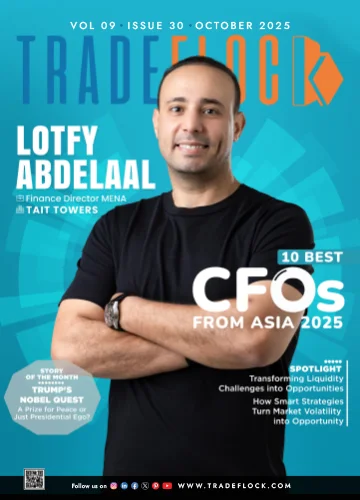
Cultivating trust, nurturing sustainable growth
Dr. Satbir Singh Kadian
CEO


Cultivating trust, nurturing sustainable growth
Dr. Satbir Singh Kadian
CEO
Haryana Water Resources Authority
I n today’s public governance, the role of a CEO extends far beyond administration—it requires strategic foresight, cross-sector integration, and the ability to drive largescale transformation. This is especially true in regulatory institutions, where decisions impact millions and demand both technical expertise and visionary leadership. Dr. Satbir Singh Kadian, CEO of the Haryana Water Resources Authority and Engineer-in-Chief of the Irrigation & Water Resources Department, Government of Haryana, embodies this shift. With a B.Tech in Mechanical Engineering from Thapar Institute and a Ph.D. in Functional ERP and Sustainability from IIT Delhi, he brings a rare, systems-level view rooted in data analytics, operational reform, and institutional accountability. Over his 27-year career in public infrastructure, Dr. Kadian has gone beyond conventional mandates—introducing evidencebased regulations, engaging with national and international agencies, and aligning policy with on-ground execution. His work has shaped sustainable agriculture, rural planning, and industrial compliance across the state. In this exclusive TradeFlock feature, Dr. Kadian reflects on his journey from technocrat to executive leader, the frameworks behind his reforms, and how Haryana is crafting a futureready model for Integrated Water Resource Management.
What’s been your biggest challenge transitioning from Chief Engineer to CEO of the State Water Regulatory Authority?
When I became CEO in 2021, the real task was shifting mindsets, not just solving technical issues. Haryana’s water demand nearly doubles its natural supply, with agriculture consuming over 90% of freshwater—far above the global 70%. Our analysis revealed a 14 BCM shortfall, annual groundwater drops of nearly a metre, and 1 million acres waterlogged; 88 of 143 blocks were over-exploited. These urgent realities drove sweeping reforms.
"Water may seem abundant, but managing it responsibly is one of the greatest leadership challenges of our time."
“Agriculture was consuming over 90% of Haryana’s freshwater—a figure that called for immediate strategic intervention.” Initiatives like Mera Pani, Meri Virasat and Direct Seeding of Rice promoted sustainable farming and reduced water-intensive crops. We also encouraged the reuse of treated wastewater in agriculture and construction. Integrated under the 2023–25 Action Plan, these efforts have already saved over 5.5 BCM of water. Ultimately, effective water management is about more than policy—it demands community engagement, interdepartmental collaboration, and a true shift in collective mindset.
What challenges do you face in gaining public support, and how are you addressing them?
Public participation is vital for lasting water policy. Through the Atal Bhujal Yojana, we run large-scale awareness drives and grassroots Water Budgeting training across 36 Haryana blocks, empowering communities to create and execute their water security plans with departmental coordination. The biggest hurdle is changing entrenched practices like flood irrigation—paddy uses up to 5,000 litres per kg, despite not being Haryana’s staple. We promote crop diversification and ensure profitable alternatives. Success stories like Fazilpur Badli, now a ‘Zero Paddy Village,’ set a replicable example. We’re also reducing household water waste. In Panchkula, rejected RO water will soon be reused for gardening, car washing, and other non-potable needs.
With much of Haryana facing water shortages, what are your key focus areas?
Our top priority is ensuring Haryana’s water security by promoting sustainable river water use and maximising treated wastewater reuse, reducing reliance on depleting groundwater “Access to clean water shouldn’t be a privilege — it’s a basic right we’re working hard to guarantee.” We’re launching “Water Secure Haryana” by 2030 in partnership with the World Bank, a flagship initiative bringing over $700 million in technical and financial support. Backed by strong state funding, the program focuses on infrastructure upgrades, institutional reforms, and tech-driven water governance.
The Punjab-Haryana water dispute is back in the spotlight. What’s your perspective, especially with Haryana supplying over 1,000 cusecs to Delhi?
Water sharing is governed by established agreements and legal statutes. Haryana’s rightful allocation from the eastern rivers— Ravi, Beas, and Sutlej—is clearly defined. Since these rivers flow through Punjab, we believe Punjab is responsible for honouring these commitments. “No state exists in isolation — water must be shared, not fought over.” Haryana, for its part, provides over 1,000 cusecs of water to Delhi from its own share, demonstrating the spirit of cooperation. Equitable distribution is a legal imperative and a constitutional responsibility that all states must uphold.
What message would you share with future leaders?
My message is simple: water conservation begins with each one of us. It’s not solely the government’s responsibility—it’s a shared duty. Our ancestors safeguarded natural resources for our well-being; now, it is our moral obligation to preserve and enhance them for future generations.












